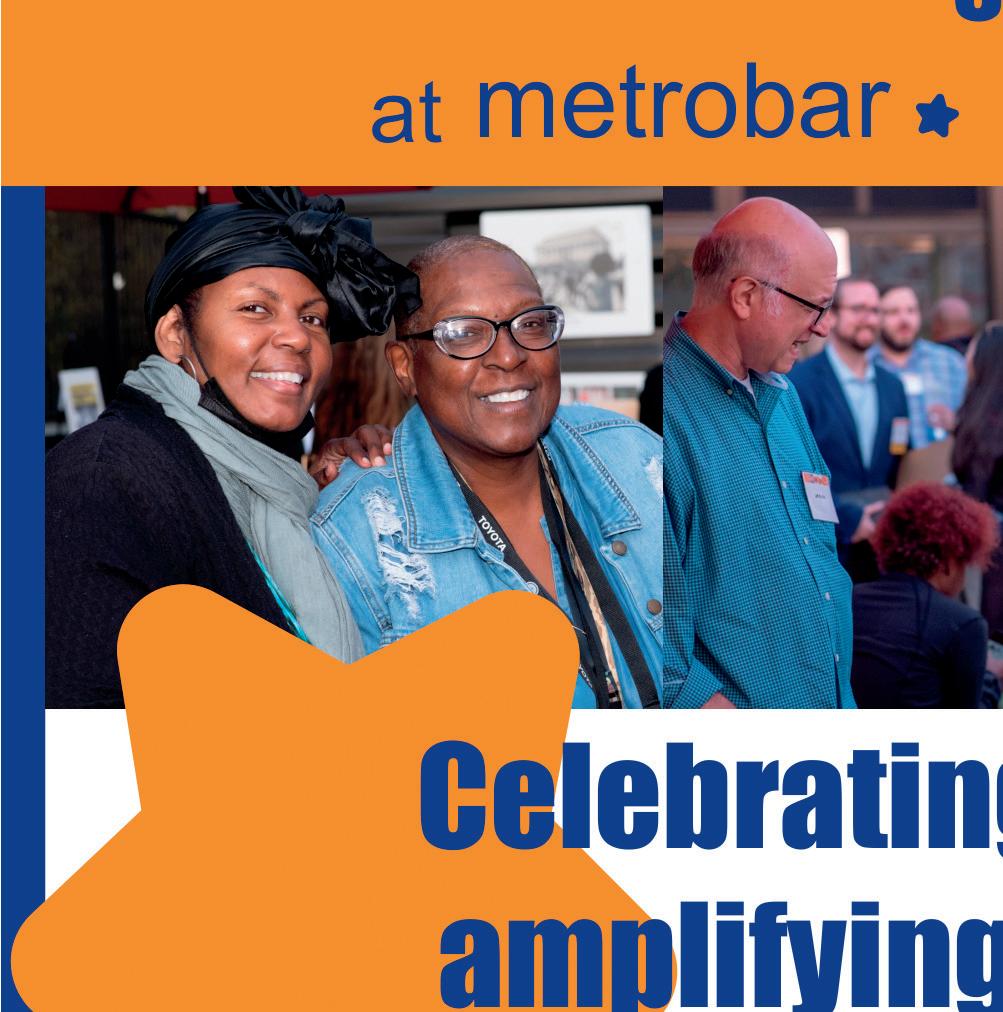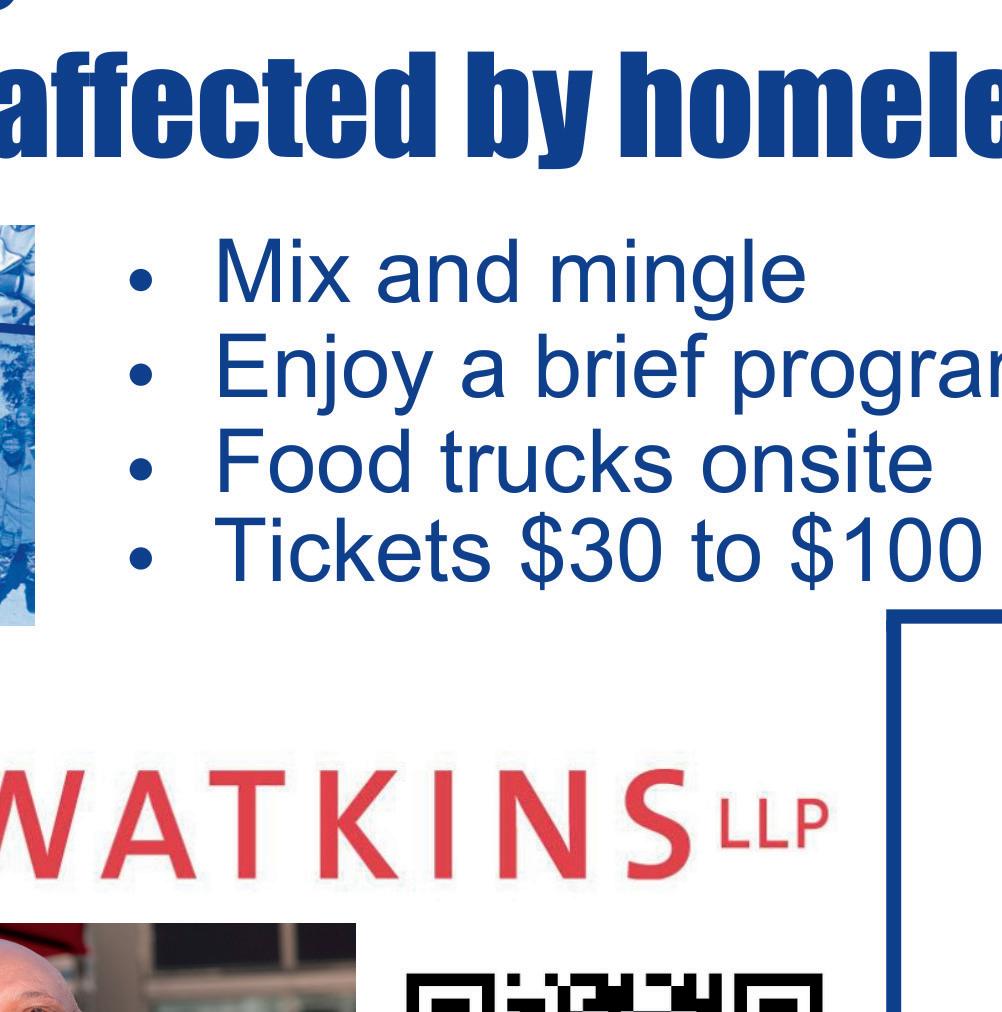














































In 2013, we began offering case management services to help anyone, including vendors, with their needs — from obtaining identification cards and emergency cash for bills and food to accessing supportive programs and applying for housing vouchers. Our team builds long-term relationships with our vendors and other clients to understand their needs and help them create plans to achieve their goals.




Abel Putu, Aida Peery, Al Edmonson, Akindele
Akerejah, Amia Walker, Amina Washington, Andre Brinson, Andrew Anderson, Angie Whitehurst, Anthony Carney, Antoinette Calloway, Archie Thomas, Beverly Sutton, Brianna Butler, Burton Wells, Carlos
Carolina, Carol Motley, Charles Armstrong, Charles Woods, Chon Gotti, Chris Cole, Conrad Cheek, Corey Sanders, Daniel Ball,
Darlesha Joyner, David Snyder, Debora Brantley, Degnon (Gigi) Dovonou, Dominique Anthony, Don Gardner, Donté Turner, Doris Robinson, Earl Parker, Dwayne Butler, Eric Glover, Eric Thompson-Bey, Erica Downing, Evelyn Nnam, Floyd Carter, Franklin Sterling, Frederic John, Freedom, Gerald Anderson, Greta Christian, Harriet Fields, Henrieese Roberts, Henry Johnson, Ivory Wilson, Jacqueline “Jackie” Turner,

Jacquelyn Portee, James Davis, James Hughes, Jeanette Richardson, Jeff Taylor, Jeffery McNeil, Jeffrey Carter, Jemel Fleming, Jennifer McLaughlin, Jermale McKnight, Jet Flegette, Jewel Lewis, John Alley, John Littlejohn, Josie Brown, Juliene Kengnie, Kenneth Middleton, Khadijah Chapman, Kym Parker, Laticia Brock, Laura Smith, Lawrence Autry, Levester Green, Lu Potter, L. Morrow, Mango Redbook, Marc

Grier, Marcus McCall, Mars, Martin Walker, Mary Sellman, Maurice Spears, Melody Byrd, Michael Warner, Michele Rochon, Morgan Jones, Nikila Smith, Patricia Donaldson, Patty Smith, Phillip Black, Queenie Featherstone, Rachelle Ellison, Rashawn Bowser, Reginald Black, Reginald
C. Denny, Ricardo Meriedy, Richard “Mooney” Hart, Rita Sauls, Robert Warren, Rochelle Walker, Ron Dudley, Sasha Williams,
COVER DESIGN BY COLE KINDIGER




Shuhratjon Ahmadjonov, Sybil Taylor, Tonya Williams
Vennie Hill, Warren Stevens, Wendell Williams, William Mack
BOARD OF DIRECTORS
Mary Coller Albert, Blake
Androff, Nana-Sentuo

Bonsu, Jonquilyn Hill, Stanley Keeve, Clare

Krupin, Ashley McMaster, Matt Perra, Michael Phillips, Daniel Webber, Shari

Wilson, Corrine Yu
CHIEF EXECUTIVE OFFICER



Brian Carome
DIRECTOR OF DEVELOPMENT AND COMMUNICATIONS


































































































































































































































































































































Doris Warrell
DIRECTOR OF PROGRAMS
















































































































Darick Brown
DIRECTOR OF VENDOR








EMPLOYMENT
Thomas Ratliff


AIDA PEERY
Artist/Vendor
Street Sense Media

went back to its biweekly schedule last month and I hate it! Because I and several other vendors were generating a weekly income.

Some vendors claim they weren’t generating extra money from the weekly paper. That’s hard for me to believe when a lot of people were going to workshops for an hour to get the 10 free incentive papers throughout the week. And some folks didn’t have trade-ins during the weekly paper sales.*
Patricia Donaldson
Aug. 20
ARTIST/VENDOR
Levester Green
Aug. 27
ARTIST/VENDOR
VENDOR PROGRAM ASSOCIATES
Aida Peery, Clifford
Samuels, Chon Gotti
VENDOR
PROGRAM VOLUNTEERS
Beverly Brown, Roberta Haber, Ann Herzog, Madeleine
The main reason that I liked the weekly paper is the information in the paper was fresh and it happened like two or three days ago. However, with a biweekly paper, the news is old and the information it contains is about stuff that happened two to four weeks before.
Street Sense has 16 pages and the editor now has to really make a decision on what’s important and what’s not important to fill up the pages.






My customers have told me that they don’t really want to read past page 14 because they do a lot of reading at their jobs. I can sympathize with their thinking. I’m very happy my customers and others support our paper whether or not they read it.
The bottom line is: I need the income from selling the paper. And having the weekly paper was awesome because I was generating money on a weekly basis. My customers loved the weekly paper because that meant they didn’t buy the same paper two times during the biweekly cycle. That’s a turn off for some customers. Some vendors won’t tell or ask a customer if they might have already bought the paper knowing the
new edition is about to come out within a day or two.
It’s not like our vendors are being deceitful but Street Sense Media trains new vendors every Tuesday and Thursday to sell the paper. And it takes time for a new vendor to learn how to do things better in our organization.
I really hope we can get back to weekly papers one day. But it’s certainly not going to happen today or maybe even this year.
All things said, there is a bright side for vendors having a biweekly paper. It’s that we get two for one sales back before the new edition comes out.*
I also want to give a shoutout to all our customers that support Street Sense Media and to my colleagues and vendors who’ve stuck with me through our up and down endeavors.
Thank you DMV for the awesome support!
Editor’s note: A “trade-in” refers to an exchange of the previous week’s edition for the current one. During a “two for one” sale, vendors are able to purchase two papers for the price of one wholesale paper.
□ The August vendor meeting will be Friday, August 25 at 2 p.m. Come to discuss important issues facing Street Sense Media.
□ Find a list of farmers markets, the hours when Case Management is open, and other info useful to vendors at streetsensemedia.org/ vendor-info
□ Let’s work on those paper sales together! Come see Thomas to learn how to accept Venmo and CashApp payments and how to use Twitter to let customers know where you’re selling.
□ Receive extra newspapers for referring someone you know to New Vendor Orientation. Every Tuesday and Thursday at 2 p.m.



Read this democratically elected code of conduct, by vendors, for vendors!
1. I will support Street Sense Media’s mission statement and in so doing will work to support the Street Sense Media community and uphold its values of honesty, respect, support, and opportunity.
Derian Hickman
Aug. 28
ARTIST/VENDOR
Queenie Featherstone
Aug. 29
ARTIST/VENDOR
McCollough, Dylan Onderdonksnow, Amelia Stemple, Tyler Bruno
MANAGER OF ARTISTIC WORKSHOPS
Maria Lares
EDITOR-IN-CHIEF
Will Schick
STAFF REPORTER
Annemarie Cuccia
EDITORIAL INTERNS
Cole Kindiger
Jessica Rich, Casey Bacot, Gabriela
Ferreira Reitz
ARTISTS-INRESIDENCE


Ariane Mohseni
(Film), Bonnie Naradzay (Poetry), David Serota (Illustration), Lalita Clozel (Film), Willie Schatz (Writing), Leslie Jacobson (Theater), Roy Barber (Theater), Rachel Dungan (Podcast)







ARTS EDITOR
(VOLUNTEER)





Austine Model


OPINION EDITOR (VOLUNTEER)







Candace Montague
EDITORIAL VOLUNTEERS
Josh Axelrod, Ryan Bacic, Lilah Burke, Chelsea Ciruzzo, Lenika
Cruz, Alison Henry, Kathryn Owens, Andrew Siddons, Bill Meincke
2. I will treat all others, including customers, staff, volunteers, and fellow vendors, respectfully at all times. I will refrain from threatening others, pressuring customers into making donations, or engaging in behavior that condones racism, sexism, classism, or other prejudices.
3. I understand that I am not an employee of Street Sense Media but an independent contractor.



4. While distributing the Street Sense newspaper, I will not ask for more than $2 per issue or solicit donations by any other means.
5. I will only purchase the newspaper from Street Sense Media staff and volunteers and will not distribute newspapers to other vendors.

6. “I will not distribute copies of “Street Sense” on metro trains and buses or on private property.”


7. I will abide by the Street Sense Media Vendor Territory Policy at all times and will resolve any related disputes with other vendors in a professional manner.


8. I will not sell additional goods or products while distributing “Street Sense.”






9. I will not distribute “Street Sense” under the influence of drugs or alcohol.




10. I understand that my badge and vest are property of Street Sense Media and will not deface them. I will present my badge when purchasing “Street Sense” and will always display my badge when distributing “Street Sense.”

Street Sense Media vendors keep all of your suggested $2 donation.
In his first year experiencing homelessness, combat veteran Jeffrey Williams faced many obstacles, one of which concerned his medical care.
“I came to D.C. to get my benefits started,” he said, “and to get medical attention through [Veterans Affairs].” However, he could not receive this care without an ID. And to obtain an ID, he would need a physical address.
Similarly, Tyree, a relaxation therapist, mechanic and music producer had his wallet stolen while experiencing homelessness. “I didn’t have IDs and a social security card any more,” Tyree said.
Through word of mouth, Williams and Tyree heard about the mail service at So Others Might Eat (SOME). At their O St. NW location, this D.C. nonprofit runs a mailroom for people experiencing homelessness, enabling clients to receive packages, letters, paychecks, social security cards, birth certificates, stimulus checks, voting ballots and court documents.
“The mail service is a godsend for us that don’t have a physical address so we can have a place to go pick up our mail,” Williams said.
When the mail services program at SOME started about three years ago, “it was being run out of a closet file cabinet,” said Daniel Slick, SOME mail clerk and services coordinator. The need for unhoused people to have a physical mailing address became apparent during the COVID-19 pandemic as the government began mailing out aid.

“When I started, we, in the first month, just started signing
people up for stimulus checks,” Slick said. As Slick watched people “break down crying and give hugs and be really thankful” when they received their stimulus checks, he realized the service was essential.
Over the past three years, Slick and his coworkers have expanded the program and now have a small room dedicated to mail services. In this room, they sort and alphabetize mail from the post office twice a week based on the type of mail: important documents, general mail and packages. Since all general mail is returned to the sender if it is not picked up within four weeks, they also have a holding section where they store mail for people in special circumstances, such as those incarcerated, for up to six months.
After sorting the mail, Slick and three other employees in the volunteer services team notify clients about their mail through text and email. Clients with no internet access can ask the mailroom workers in person if they have mail. To pick up their mail, clients are required to show ID or another document with their name on it.
“We have in our system right now 4,000 people who have received mail here before,” Emma Mitchell, a volunteer who recently finished a year of service at SOME, said. SOME’s mail services program is one of 10 in the United States. Project Service Connect in San Francisco is the only one in the country as big as SOME’s.
“I think the needs of people who are homeless are often overlooked beyond the immediate needs that really scream out to people like food and clothing,” Slick said. “It’s just a lack of fully comprehending the needs that people without homes have.”
SOME’s mailroom was built upon the organization’s whole-
person care approach to helping people who are struggling. “Because we have holistic care, it allows us to treat people with more dignity and respect and tackle those hidden obstacles to overcoming homelessness and poverty,” Mitchell said.

So far, the SOME mailing program has been largely successful, according to Daryl Wright, senior vice president of community outreach. Approximately 1,600 people registered to vote for the first time in 2020, and 1,200 have received stimulus checks through the mail service.
However, there is still room for growth. Currently, people cannot send mail through the program and must go to a post office. “We hope to be eventually able to provide stamps to people who want to send things out,” Slick said.
SOME also hopes to lengthen their mail service hours, from five days a week to six. An additional day would provide more opportunity for people who are occupied during the week to pick up their mail.
The SOME mail program isn’t just about mail, but about helping people experiencing homelessness gain further autonomy and improve their lives. “Tools, like an address to get mail, can allow people to finally get out of that cycle of poverty and homelessness,” Mitchell said.
Editor’s note: We sometimes allow sources who have experienced homelessness to withold their full names from our stories especially if there are concerns about retaliation. Tyree did not provide his full name for use in this story.


 CHON GOTTI Artist/Vendor
CHON GOTTI Artist/Vendor

In the heart of any bustling city, newspapers have long been the voice of the community, offering insights, perspectives and stories that connect us. Street Sense, a beacon of journalistic integrity, has been serving its readers with dedication since 2003. But recent changes have raised eyebrows and concerns.
The decision to transition from a weekly to a biweekly publication schedule has prompted a mixed response from loyal readers. While adapting to change is a natural progression, the move has left some, myself included, pondering the potential implications for the community and the newspaper's future.
One undeniable concern is the potential impact on future sales and readership engagement. The weekly publication provided a consistent rhythm, delivering timely updates on local happenings and issues. The shift to biweekly might inadvertently disrupt this flow, leading to a detachment from the pulse of the city and a decline in engagement among readers who look forward to fresh content more frequently.
Moreover, the timing of this transition coincides with an era of soaring prices and inflation, further complicating the landscape. In response, Street Sense Media is considering raising the paper's suggested donation from $2 to $4. While this increase is modest, it sparks a larger

KYM PARKER
Artist/Vendor
This world, we need help
We need love And understanding in this world

And we need to talk to one another
Information is threaded through the years
What we need is unity
God’s trust gives us that
And the power of yes
I say yes to the two weeks
For the paper
Because it helps us and It gives us access
It shows us what’s right
And what’s wrong
It gives us more than we can take in
God said to understand her
To understand her
You must know her children
To feel us
To hear us
When our voices reach out

To feel us
When we sing to you
And we pray to you
That’s the reason I’m here
At this place
This paper Street Sense
It makes a lot of sense to me
To give things back to them
Because I believe I pray normality is missing
conversation about sustaining quality journalism in the face of economic challenges.
Although a price hike might raise concerns about accessibility, it's important to recognize the reality of maintaining journalistic integrity in a volatile economic climate. A higher suggested donation could potentially help offset rising production costs, ensuring the continuation of high-quality reporting and meaningful community engagement. Readers who value the unique perspectives and in-depth coverage provided by Street Sense might find it worthwhile to contribute a bit more to keep the newspaper thriving.
While change is met with initial resistance, it's also an opportunity to explore new strategies and perspectives. Street Sense Media's journey reflects a delicate balance between adapting to economic challenges, staying relevant and maintaining its commitment to the community. The transition from weekly to biweekly and the possible donation increase serve as catalysts for conversation about the newspaper's future trajectory.
As we navigate these changes together, let's remember the crucial role Street Sense Media plays in amplifying diverse voices, highlighting local stories and fostering a sense of unity. While the shift in publication frequency and donation amount may not be universally welcomed, they shed light on the complexities of sustaining community-driven journalism in an ever-changing landscape.

When we do the two week thing We can get a lot done Our prayers are answered I love working here
Because everybody is gracious, Honest and peaceful It’s family
This family gives me home, hope And they pay me for my thoughts
Well, so I believe yes, to the two weeks And no to a monthly Because showing love
Showing faith is how we Get through the day
When we talk, it’s like therapy
When we pray, it’s like worshiping When we act, it’s to show where we are
MARS
Artist/Vendor


Writing and selling copies of Street Sense is my only income. It's flexible in its schedule and I can work remotely. I liked it better when we would print every week, so this will take some adjusting. I hope we go back to the original schedule soon.
In our lives
We reach out to others
We know that our lives have a different
We know that our lives have changed
We understand ourselves
We know ourselves
That’s the reason I say yes
I believe in God’s work
I believe in angels
Send me my new family
To talk through the problems
So this, I say to you all, two weeks is better
I say to all, listen
I say to you all, pray
Because it helps
Kymira says yes
I love my new family
Be at peace
Show love Family means everything
The D.C. government is making progress in housing people with its record number of vouchers, but people familiar with the process say the wait is still far too long.
D.C. began fiscal year 2022 with 2,400 new Permanent Supportive Housing (PSH) vouchers for individuals experiencing homelessness but was slow to move people into housing, creating what many decried as a “voucher backlog.” Over the last year, data from D.C.’s Department of Human Services (DHS) shows the city has been making strides. By April 2023, D.C. connected all 2,400 vouchers to people who needed them, and began distributing an additional 500 housing vouchers funded for fiscal year 2023. But complicating factors — including an inability to contact people who were previously matched with a voucher — mean that D.C. reported in June that it had just over 900 vouchers left to distribute.
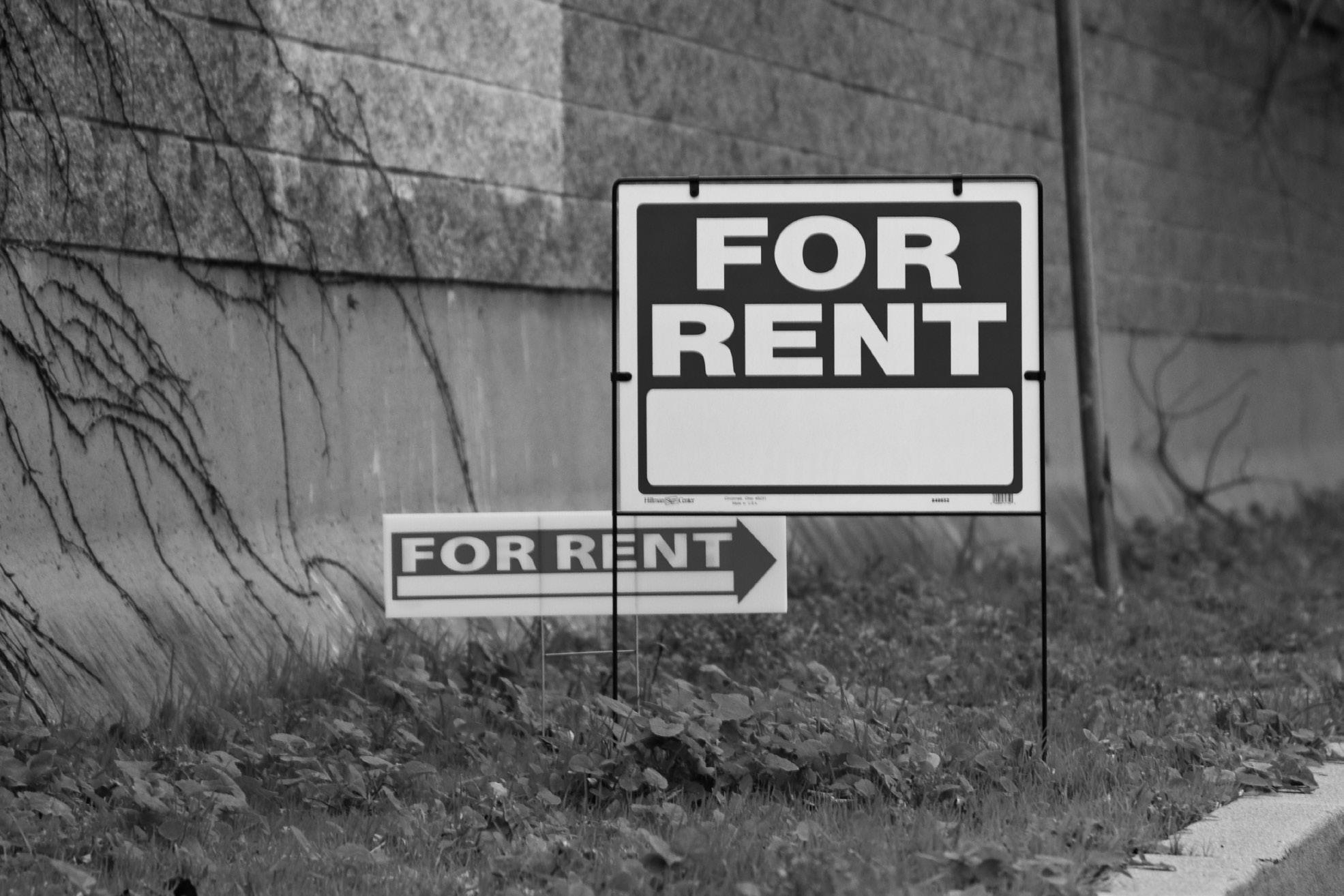
Being connected to a voucher is just the first step in the process. About 1,200 people already connected to a housing voucher funded in FY 2022 are still waiting to move into housing as of Aug. 1. In interviews with case managers, advocates and voucher applicants, Street Sense and The DC Line heard the system is still inefficient and burdensome, as housing providers contend with staffing challenges and government bureaucracy.
The delays can be traumatic for someone trying to move into housing while also managing their mental and physical health. “We know that this process, these gaps — it wears on the individual,” said Chandra Dawson, vice president of housing services at the D.C.-based nonprofit Friendship Place.
Permanent Supportive Housing (PSH) vouchers are widely seen in homeless services as the best resource for people who have experienced chronic homelessness. A person is chronically homeless if they have been unhoused for over a year or multiple times over three years and also are struggling with a mental illness or disability that makes it difficult to find or keep housing. The PSH voucher funds long-term housing, along with supportive services, in an effort to provide stability. Homeward DC 2.0, the city’s official plan to end homelessness, recommends the city create between 3,100 and 5,500 new PSH vouchers for individuals by 2025. D.C. took the first step in 2021 when the D.C. Council voted to raise taxes on the highest-income residents to fund a stunning new 2,400 vouchers, nearly doubling the PSH program. Advocates initially
touted the new funding as a game changer for homelessness in D.C., but the mood had soured by the summer of 2022 due to concerns about implementation.
In order to move into housing with a PSH voucher, a person has to go through several steps. They’re first matched to the voucher, and then assigned to a case manager who will help them through the rest of the process. They then have to apply for the voucher officially, enter the PSH program and finally find housing.
As case managers and outreach workers came back to work in person as the pandemic waned, the homeless services sector struggled to keep and hire staff. At Friendship Place, staffing was dismal when Dawson started in 2021. Staff had been heavily impacted by the pandemic, Dawson said, and it was difficult to get people to come into the office, or hire staff willing to work in person.
Without a case manager assigned to them, almost 900 people languished in a liminal state during 2022, knowing they would qualify for a voucher but with no idea of when they could move into housing. DHS numbers show that in the final three months of FY 2022, only 30 people were newly assigned to case managers, and the wait time for getting a case manager grew from 60 days to 150, according to testimony from DHS Director Laura Zeilinger.
By October 2022, the start of the next fiscal year, D.C. had moved just 600 people into permanent housing, using onequarter of the vouchers funded. Other jurisdictions across the country struggled to lease up all federal vouchers they received during the pandemic, providers have shared at national conferences. But some localities have had success — one Continuum of Care in Texas was able to house nearly 800 people in six months.
That November, the D.C. Council held a hearing on the voucher backlog. Providers testified that not only didn’t they have enough staff but there were delays in every step of the process. Once case managers submitted voucher applications, it took the D.C. Housing Authority (DCHA) nearly 100 days to process them, according to Will Doyle, director of housing operations at Pathways to Housing, another local nonprofit housing provider.
“Implementation delays are much worse than we ever
expected,” D.C. Fiscal Policy Institute Deputy Director of Legislative Strategy Kate Coventry testified. At the current rate, she said at the time, it would take D.C. at least three years to house all 2,400 people.
In her testimony, Zeilinger admitted officials were having trouble scaling up the voucher system. But the government was working on improvements, she said. She was confident all 2,400 people could be in housing by October 2023.
As of Aug. 1, just 1,133 people have moved in, according to DHS data.
In February, after the National Park Service closed a 70-person encampment at McPherson Square, At-Large Councilmember Robert White — the newly minted Housing Committee chair — called on D.C. officials to create an emergency plan to clear the voucher backlog. The city responded a month later with a list of existing initiatives, many of which Zeilinger outlined in the hearing.
DHS began offering hiring and retention bonuses for providers and eliminated some barriers, making positions easier to qualify for and more lucrative. Providers could draw down the bonuses, which ranged from $1,500 to $3,500 based on the position, starting in November 2022. The bonuses are available through the end of this fiscal year, according to an agency spokesperson. DHS hopes to continue them into fiscal year 2024 but hasn’t yet found the funding to do so.
The agency also changed some eligibility requirements for case managers in spring 2022, allowing more college degrees to count as a qualifying educational background and reducing the number of years of experience needed from two to four. In the spring of 2023, the agency implemented similar measures for flexibility in hiring supervisors.
DHS also launched “Operation Make Movement,” which set up a program to help people prepare their voucher applications while they wait for a case manager, so they’re ready to apply as soon as one is assigned. By May, 186 clients had gone through Operation Make Movement. DHS said the initiative was successful, having cut the process by 22 days.
Over the spring, some of the obstacles in the system started to shake loose, providers said. In a June meeting, DHS said all FY 2022 vouchers had been matched at least once. But because some vouchers were matched to people who were subsequently deemed ineligible or with whom case managers lost contact, 648 vouchers turned over, with 414 vouchers still available. With the 500 new vouchers funded in FY 2023, there were 914 vouchers left to match by October 2023.
Those 648 vouchers turned over partially because of the severe backlog, those familiar with the process say. In 2022, the city made the decision to continue pairing people with vouchers, even though there were no case managers available to help them, according to updates provided at meetings of D.C.’s Interagency Council on Homelessness (ICH). By the time a case manager tried to reach out, providers could not always find the person.
If newly assigned case managers know just the general area where a client who lives outside sleeps, they may have to walk the area trying to find them, Dawson said. The government may have closed an encampment where the person was living, or the person might have moved for another reason. Dawson’s team has lost contact with between 15% and 20% of their assigned clients during the process.
While waiting, 39 people who were unhoused and matched to a PSH voucher or some other housing resource died in 2022, according to a report from a June 13 ICH meeting.
For the over 1,200 people still waiting to move into housing with an FY 2022 voucher, the challenge is not over. Providers agreed there are two main roadblocks: staffing and bureaucracy.
“Staffing is not as challenging as it used to be. Does that mean all key positions are filled? No, it does not,” said Dawson.
When Jaydot, a D.C.-based housing consultant, launched its PSH program last year, staff shortages prevented them from taking on clients for the first nine months, said Sharlene Castle, the director of operations. While Jaydot received dozens of applications for staff positions, it had to reject over half at the outset because they didn’t meet the DHS-set minimum requirements. The organization now has two case managers. Its contract authorizes a much bigger program, but that would require more staff.
Castle said Jaydot offered jobs to at least two people who declined because the salary was too low, even with incentives. That occurred even though Jaydot boosted the pay the organization would get from DHS via its other revenue streams, an option that isn’t feasible for all organizations.
“Every PSH provider right now has the exact same job description,” Castle said. “I think that the pay is really the big thing.”
N Street Village, which administers site-based PSH programs, has been facing many of the same staffing challenges, said Leora Ibraheem, the organization’s chief program officer.
The organization is part of a coalition of providers advocating for the Social Work License Modernization Amendment Act, which is now before the D.C. Council. It would eliminate an exam requirement that has historically disadvantaged Black social workers. Providers argue that since social workers already need a college degree and hundreds of hours of experience to obtain a license, the exam is an unnecessary barrier. Doyle, from Pathways, has testified that the organization would have been able to hire dozens more case managers without the exam requirement.
People with lived experience are also advocating for changes in licensing requirements that would allow them to become case managers, since they’re already familiar with the housing
process. DHS is launching a peer case management institute this fall.
Finally, some providers said they would like to see the agency provide more flexibility in administering job requirements such as one year of experience. They’re also hoping DHS continues to offer staffing incentives like the bonuses.
While DHS is the government entity that connects clients to providers, it’s DCHA that handles the voucher application process. And a lack of responsiveness and clarity at the beleaguered housing authority has led to applications entering what many providers call “a black hole.”
“It is still quite challenging for providers to reach individuals within the agency,” Dawson said. “That’s another day and another day and another day.”
Under Jaydot’s arrangement with the D.C. government, when its case managers help clients prepare voucher applications, they are sent to DHS. That agency then forwards those applications to DCHA. At first, Nicole Jean, director of programs, told her clients it would take about 30 days to hear back, but she no longer does so.
“We are now trying to get away from even giving a time frame,” Jean said. “All we can tell clients is we’re waiting to hear.”
Once the voucher application reaches DCHA, it can take a while to even show up in the agency’s system — one client submitted his application on May 15, and it didn’t show up until July 27, Jean said.
It’s still taking at least three months for DCHA to approve applications, according to Lynn Amano, director of advocacy at Friendship Place. Her colleague Dawson said both DHS and DCHA have improved communications, but lags in the process remain.
“I can lose a participant in that time. They become disengaged,” Dawson said of the consequences of the delays. “When they’re now eight to nine months into the process, they’re not ready to move in. They want it, but they’ve lost that motivation, momentum.”
DCHA still has a goal to process applications in 30 days, a spokesperson for the agency wrote in an email to Street Sense and The DC Line, and is “taking steps to improve our processing times.”
There are several other reasons an application might get stuck, Dawson pointed out. Sometimes voucher applicants are slow to respond to case managers or extra time is needed to obtain documents such as birth certificates from other government agencies. But some of it feels like unneeded bureaucracy, providers said.
For instance, Jesse Rabinowitz, senior manager for policy and advocacy at Miriam’s Kitchen, said one of the organization’s case managers worked with a client who completed an application but did not check the boxes indicating each section was done. DCHA denied the application, apparently on that basis. Similarly, some of Dawson’s clients have forgotten to fill out just one line, a quick mistake that sets them back to the beginning of the process.
As case managers try to sort through these issues, DCHA often does not respond to their inquiries, providers said. Jaydot has to send all communications through DHS first to get answers, Jean said.
DCHA is aware there are some gaps in communication, the spokesperson wrote, and is working to develop an internal tracking system that would sync up with the DHS system to provide faster updates on the status of applications.
To speed up the housing process, case managers at Jaydot help clients look for housing while they wait for their voucher.
By doing so, some clients can point to the building they want as soon as they’re approved, and move in quickly.
But providers hope to see broader and more comprehensive procedural improvements. For years, they’ve called for DHS and DCHA to create a portal that would let applicants track their status and allow agency workers and case managers to quickly resolve issues, rather than going through a slow chain of communication. While DCHA is cautious about a single portal, given privacy concerns, the agency is working to allow voucher holders to upload documents via a new participant portal. Rabinowitz, meanwhile, suggested locating the entire process in DHS, which is how the program used to operate.
As part of an effort underway for nearly a year now, The Lab @ DC — a design and research team based in the Office of the City Administrator — hopes to make the PSH applications easier to fill out, reducing the number of mistakes case managers have to fix.
The redesign project started in the fall of 2022 at the request of both DHS and DCHA, Civic Design Manager Karissa Minnich said.
It can take up to two hours to fill out a voucher application, Minnich said. Because the packet includes multiple forms, some information is requested over a dozen times. With so many pages, it’s more likely that clients might accidentally leave a question blank, or make a typo.
The Lab is working to consolidate the forms and make them easier to fill out, Minnich said. Once the new forms are released later this year, she hopes to see a reduction in the time it takes to fill out an application. The team is also working to develop additional recommendations on how to improve the voucher process, but can’t yet share specifics.
In March, DHS also announced plans for a central repository to connect people to units they could live in once they have vouchers. It can often be hard for voucher holders to find a place to live, as they face discrimination in renting and also have government-imposed limits on how much rent a voucher can cover. DHS says the repository will launch in September.
Challenges at DCHA do not end once people have their vouchers. The agency has to inspect and approve all units voucher holders rent. Inspections can take up to two weeks just to schedule, while some providers say they can do them within 24 hours. DCHA has also recently implemented a rent reasonableness process, as per U.S. Department of Housing and Urban Development regulations. To prevent the agency from overpaying landlords, staff need to verify the rent of each unit a voucher holder wants to lease up, which some providers say is already resulting in longer wait times.
The PSH voucher program has also been under criticism for its administration once people are in housing, as a recent Washington Post article reported. Clients are supposed to receive supportive services to provide stability, but some voucher holders and property owners say those services are lacking.
This spring, the D.C. Council approved a budget with only 230 new PSH vouchers, with legislators saying the sizable backlog showed a lack of capacity to handle a further expansion. To fulfill the most ambitious recommendations in its 2021 plan to end homelessness, D.C. would need to fund and distribute another 2,300 vouchers in FY 2025 — which would be another huge influx the system may not be ready for.
“We need to start planning for that now,” Rabinowitz said.
In Hawaii, one developer is working with a new housing model that promises to better address homelessness — thanks to changes to zoning laws making it easier to build affordable housing.
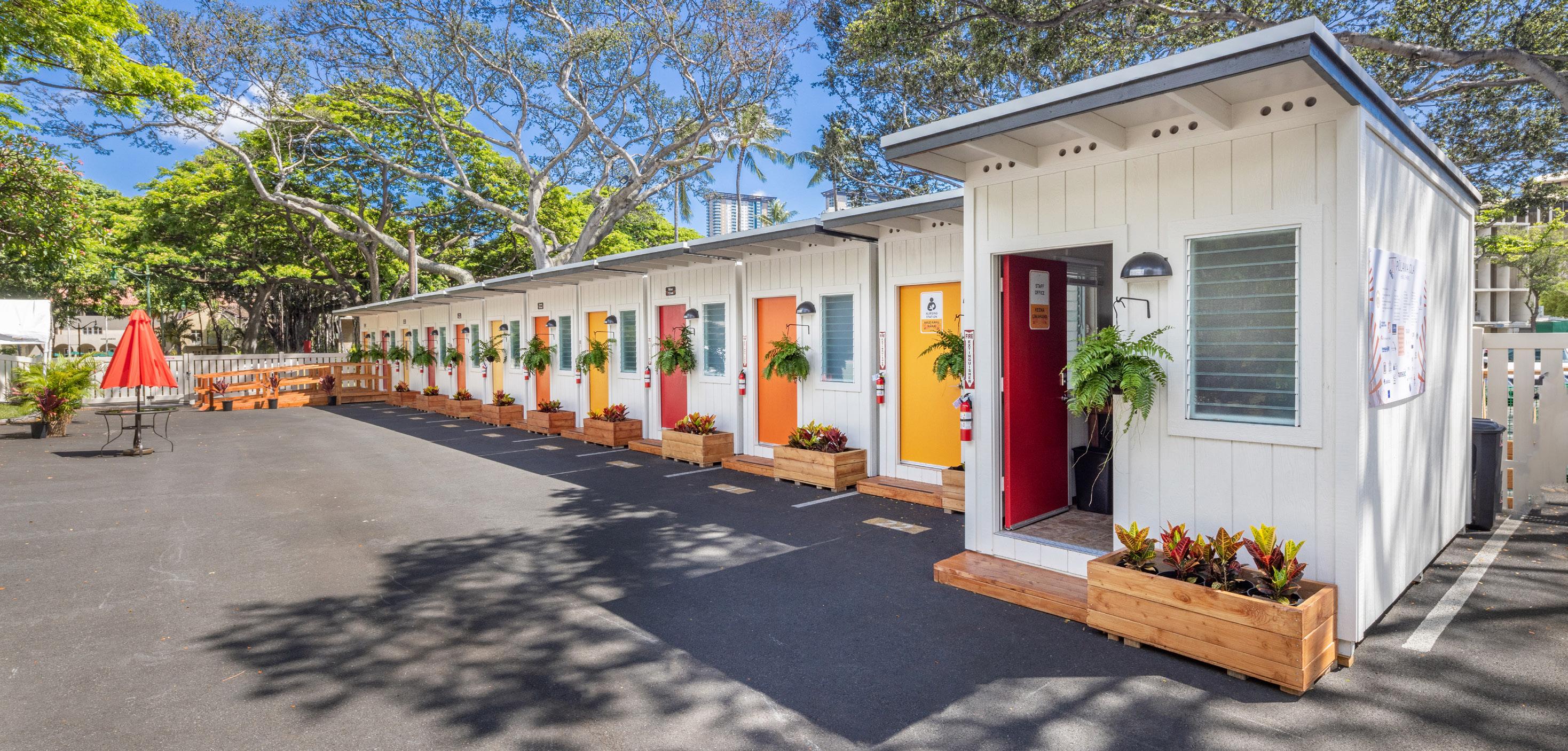
The model, called “kauhale,” draws from Indigenous Hawaiian housing practices and combines modest bedrooms with communal living spaces like bathrooms, dining rooms and living rooms. According to housing advocates interviewed for this article, it’s meant to create a “supportive community” — to build not just houses, but homes.
Nonprofit developer HomeAid Hawaii has plans to build kauhale across the state, as part of a growing movement to address Hawaii’s homelessness crisis. As part of that effort, Hawaii Governor Josh Green recently issued a round of emergency proclamations that temporarily suspend the bulk of the state’s housing regulations.
The proclamations are meant to make it easier for companies to construct affordable housing. At a time when housing affordability is reaching record lows, according to one Fox Business report, that is no simple task.
Developers nationwide say they face many stiff barriers when building affordable and accessible housing that addresses homelessness. Not only do they contend with rising construction costs, according to one report by the National Association of Home Builders, they say they are caught within political systems that make construction slower and more expensive and, as a result, are struggling to keep up with demand.
This lack of affordable housing is a primary driver of the rising unhoused population, according to a new study released
by the University of California at San Francisco in June.
But in the midst of this crisis, HomeAid Hawaii believes it has developed a model that can overcome those obstacles, creating affordable, supportive housing for those who need it.
Jet Flegette, an artist and vendor with Street Sense Media, has watched many of her friends and colleagues move into housing after years of experiencing homelessness. Flegette also experienced homelessness for five years. But sometimes, she said her peers can fall out of their housing programs. Not because of inadequate funding, she said, but because of a lack of social support — a lack of community.
“People just become lonely,” Flegette said. “A lot of people that get housing, they come back to the neighborhood and act like they’re still homeless. They have to go back to the neighborhood just to feel normal again. They’ll put you in a place that’s surrounded by, well, snooty people. Cut off from your friends. You just don’t feel supported.”
Supportive housing, according to the U.S. Interagency Council on Homelessness, describes a blend of inexpensive, community-oriented housing and voluntary wraparound services. It’s meant to provide vulnerable communities — especially disabled and unhoused people — with a stable and fulfilling place to live.
This broad framework informs the construction of many different kinds of housing, including the kauhale model and, especially in Europe, social housing.
There are some key differences between social housing,
which has become hotly debated since D.C. lawmakers pitched the project last year, and supportive housing. According to House Our Neighbors, a political committee of Seattle-based street paper Real Change News, social housing developments are owned by the government and low-income tenants live alongside more affluent ones. However, supportive housing projects can be privately owned and do not always serve mixed-income residents.
Supportive housing projects have varying levels of success — while a development in Connecticut might facilitate a sense of community and offer full-scale wraparound services, another in Arkansas might be isolating or offer less expansive care.
This could be due to the political environment, a failure of wraparound services or a lack of protection from rent hikes or shoddy repairs, realities that have often been covered by this newspaper.
Building housing is expensive. According to one explainer by The Urban Institute, a D.C.-based think tank, developers are subject to a host of costs — including buying the property, getting construction materials and running the company itself. Sometimes, if investors or lenders aren’t convinced the project will make a profit, they can shut it down before it has a chance to begin.
This leaves developers in a tenuous position — one where affordability is vital. Developers interviewed for this article respond to this pressure in variety of ways.
Some housing executives say they stay focused on the
technical barriers to building housing — the time, energy and cost of construction. They invest in out-of-the-box solutions, like tiny homes, 3D printing or hemp-sourced construction materials as ways to cut costs.
One such company, Connect Homes, uses prefabricated — or “prefab” — housing, building the homes in advance and later shipping them.

“The entire purpose of our company is to bring modern living to everyone, to make it more affordable,” said Connect Homes Marketing Leader Whitney Walker.
They’ve installed hundreds of beds and several shelters across California, ranging from Long Beach to Rohnert Park.
Meanwhile, three developers interviewed for this article agreed that the real challenge of housing is not technical — it’s political.
Executives at one such company, WheelPad, argue that housing lobbyists use overly-strict building codes to drive out competition, and — more commonly — that government doesn’t do enough to prop up innovation.
WheelPad creates and installs home additions that make housing more accessible, like the lifts that allow wheelchair users to bypass stairs. The add-ons are distinct because they can be built in a fraction of the time of competitors. But right now, the cost is prohibitive.
“Systems are built to utilize existing technologies,” said RJ Adler, director of growth at WheelPad. “If you want to [get a WheelPad unit] today, it’s a lot like installing solar panels on your roof in 2005. You have to have the time, money, energy, or expertise, or the right combination of those.”
If governmental subsidies supported the new technology — like it now does for renewable energy — accessibility-focused companies would be able to expand, said Adler.
Rather than investing in expensive, cutting-edge technology, HomeAid Hawaii achieves affordability by building a broad base of support, according to Kimo Carvalho, the executive director of HomeAid Hawaii.
Part of a national network of HomeAid developers and partners, HomeAid Hawaii is able to secure discounted building materials, supplies and equipment. Volunteer laborers in the region — including architects, construction managers and civil site engineers — also donate their time, leading to a model that saves an average of 80% on construction costs per project.
Unlike Adler, Carvalho is less concerned with governmental support. In his six years working for the Institute for Human Services, Hawaii’s largest homeless service agency, he described his relationship with the government as “always frustrating.” Today, he prioritizes his relationships with the people working on the ground.
“We try to lay at the perfect intersection between the
building industry, the homeless providers and homeless people themselves,” Carvalho said.
Developers don’t just have to navigate bureaucracy. NIMBY — an acronym for “not in my backyard” — describes the phenomenon where residents lobby against the construction of developments in their neighborhoods.
They oppose the development of everything from wind farms to prisons to affordable housing in their neighborhoods, according to Dr. Jennifer Wolch, a professor of urban planning and dean of the University of California Berkeley College of Environmental Design.
Wolch described the dynamic in her home state of California. “It’s like, ‘We’re so liberal, we’re so progressive, but we don’t want any tall buildings downtown next to the transit stop,’” Wolch said. “There’s a lot of resistance to affordable housing. There’s the whole NIMBY problem and a lot of things just get stopped.”
The loudest anti-development voices are often wealthy and politically connected, said Wolch. The position, often justified by a desire to maintain an area’s property value or keep out people of color or lower-income residents, according to Wolch, is criticized as narrow-minded and harmful.
NIMBYism is considered a contributing factor to D.C.’s zoning laws, which — with one notable exception in Arlington — over-privilege the single-family residences that, according to Wolch, lower the amount of available space and drive up housing prices.

HomeAid Hawaii has an unusual approach to the challenge of working within housing policy: They don’t.
This year, Green released a round of emergency proclamations meant to address homelessness. Part of the governor’s platform to address Hawaii’s nation-leading rates of homelessness, the emergency proclamations allow developers to bypass much of the building codes and land-use restrictions that normally inhibit construction.
“One thing that gets me excited about working under the emergency proclamation is that we get to just be innovative,” said Carvalho.“When you have loosened regulations, that really allows you to develop the type of inventory that’s needed for the communities that you’re intending to serve.”
That freedom allows the developer to conduct “trauma-
informed co-design,” which calls for deep communication between developers and the people they serve.
Under this framework, people experiencing homelessness can shape projects so that, according to Carvalho, they’re “not only stable but thriving within their community.”
This sometimes results in some unconventional developments, like the vast communities of tiny homes popping up around O’ahu. In Hawaii, where in some regions over half of homeless people are Indigenous according to one report released by Bridging the Gap Hawaii, that means elevating cultural housing practices.
“We’re building communities for the end user,” said Carvalho. “There are those magic touches that make a community feel like home. We want to consider how to elevate Indigenous culture and how [residents] practice those cultures within the communities we build.”
Kauhale, a Hawaiian word that translates to “village,” can exist in many forms, according to Hawaii’s Statewide Office on Homelessness and Housing Solutions (OHHS). But whether a kauhale community is made of tiny homes, prefab units or some other low-cost alternative, the model’s “defining feature,” according to the OHHS website, “is that it functions like a village, with people taking care of place and each other.”
There remain key differences between kauhale and other forms of social or communal living. For instance, residents of kauhale communities can stay as long as they need — there are no deadlines or expectations about when they should transition to market-rate housing.
Community members are also eventually responsible for the regular maintenance of their home, according to the OHHS. That means that, although maintenance costs may be roughly similar to other developments’, they are meant to decrease over time.
Kauhale has become the working model for many developments across the state, with Green aiming to build a dozen kauhale villages in the next three years. Kauhale, advocates say, might be a crucial step in facilitating the community and sense of belonging that’s missing from so many supportive housing projects.
“The kauhale model is establishing a new network of neighbors, friends and people who you’ve connected with on the streets,” said Carvalho. “Together, understanding each others’ collective trauma, collective goals and milestones. Supporting each other.”



When I heard that Street Sense was going back to a bi-weekly paper, I couldn't help but feel a sense of relief.

At this moment, the environment isn’t conducive to a weekly edition. Washington, D.C., reeled by lockdowns, hasn't recovered. Although they loosened Covid restrictions, people still haven't returned to the city.
The summer months have always been a terrible time to sell newspapers, but this summer was vicious, and many businesses have shut their doors.
I would like to keep the paper for two weeks and keep the price at $2 because Washington, D.C. is a transient city. Many of my customers take vacations, so if I miss one week or if they do, they can try to find my articles online. But this has been a nightmare because the site is not updated, and I have to hold onto old papers or ask the editor to post it, which is tedious and burdensome.
Another reason I prefer two weeks is that I believe Street Sense got away from being a paper that gave voice to homeless people. Rather it has become a space for homeless activists, lobbyists, advocates and other professionals. I noticed that vendors' voices are usually put in the art section, while professionals did all the opinion writing. In my view, this alienates readers that want to hear a homeless voice on tent encampments, high rent and the policies that affect them, and not the views of a particular social service provider.
Additionally, I do not understand the logic of people who are advocating for raising the price, as the Street Sense Media CEO had alluded to trying to do in a recent Washingtonian article. The Washington Post was $2 in 2013, and every time they raised their price, they ended up laying off more people




instead of increasing paper sales.
If you were having problems selling the paper for $2, why would paper sales increase by raising the price?
As a successful vendor, no one asked my advice on how to sell papers, but for some reason, Street Sense Media asks vendors who are losing customers.
Going two weeks gives customers time to digest the paper instead of becoming like the Washington Post or a daily newspaper facing extinction.
Two weeks is perfect because – while the old-school vendor happily sits in the hot sun trying to sell a two-week paper to the same 20 people – in the second week I can try new areas and always have new people buying the paper, I hear grumbling from vendors, but they must realize that you control whether the paper grows to sell weekly or daily or stays at two weeks.
If you want to return to weekly, you must sell papers. You can’t rely on management, people coming back or the metrics that once worked. There are many forces, such as artificial intelligence, apps and Venmo, that explain why sales have decreased.
Refrain from taking it personally, but accepting cash has become archaic and outdated. You can increase your sales by using Cash App, Venmo or the Street Sense App. I have been mocked and refuted, but the more tools you have, the more chances you have to increase your income.
Many problems are created when too many people wait on management for decisions when they can be proactive. Why don't vendors meet and figure out what works and throw out what doesn't?

Invest in cards and flyers because your customer can donate to Street Sense.

If you write a column, post it on Facebook and Twitter. Promote your work!


Say “celebrity vendor working here today.” Make a video. If you are happy making $30 a day, good for you, but why not make $30 an hour if you decide to make Street Sense your occupation? Some of us have been with the paper for a long time. We have been down this path before. I hope people will humble themselves, listen to successful voices and avoid destructive decisions such as raising the paper’s price. I said what I needed to say. Only time will tell if sanity prevails over panic and hysteria.
My experience working with Street Sense Media has been wonderful. I started out on a low path and had no experience writing for a newspaper, but I had some lessons from school about poetry and writing. Also I am an activist, so I joined Street Sense Media and started participating in their poetry, writing and photography classes.
I ended up getting hired for a staff position but I eventually quit. It was still a great experience.
But I have an opinion about the recent changes I am seeing here. I think that we vendors all deserve credit for our writing. But at the same time, there are people who go to our workshops and don’t put much effort into their writing or into our other groups. And we vendors receive free papers for participating in these groups, though this is now changing.
Instead of working hard individually, I think we should show each other that we can work together. I see vendors standing solo on street corners. We should be able to be on each other’s side and offer to take sides of the corners together. We could
even partner up and keep each other safe and help each other. I think the hard workers should be recognized. Of course we all deserve to get papers for free for our work, but I think they should not just be given to us. They should be rewarded to us for the work we actually do, and not just handed to us for sitting around the building.
I also think we need more financial help for those of us working with Street Sense Media that have no jobs, and are homeless or very poor.
I respect the work that Street Sense Media puts in for us and I think we should work together and support each other and not fight amongst each other. I don’t think it is a competition. It’s about co-workers getting along, working to support ending homelessness even if we are not homeless ourselves. We are activists and that is how it should be.
Now, we recently changed from getting 10 papers for participating in workshops and being able to trade in papers every week to getting five papers per group and trading our
papers biweekly. I think it is fair to try and save the paper money and to think about Street Sense’s financial sustainability. But at the same time, some of us don’t have jobs or homes. And the paper is our one source of income. The only way we make money is through selling the paper. And we use this money to buy more papers, and take whatever is left over for food, etc. I think the change to biweekly puts an added strain on homeless, jobless vendors. On the other hand, going bi-weekly does give us more time to sell off all of our papers, and we will likely waste less papers. But at the same time, we will need to sell more of them.
 NIKILA SMITH Artist/Vendor
NIKILA SMITH Artist/Vendor
Has Street Sense Media really lost its senses? That line is an ice breaker.

As a writer, the recent changes to the paper are both helpful and difficult. On the one hand, I can take my time to really write and critique my art. On the other hand, vendors are only able to be published once a month. That's a big hit to our income. I like to eat. This is not a secret. And I like to feed others, so every bit counts.

I have barriers that I just can't get around, forcing me to work extra hard to live. Street Sense is not only a great paper but so much more. Some people don't want to look at the less fortunate. Street Sense came up with a better way to approach panhandling. Well, I'm going to admit, I'm already panhandling donations in the back of my mind.
I was definitely disappointed in the scaling back of the paper because I was liking the pace even though I was still getting published every other week. Now it will be about once a month every other issue, now that we’re back on a twoweek distribution timeline. But anyway, we also lost the gift cards that were so helpful on an as needed basis.
I mean this is a street paper about the streets! Living on the streets is pretty much the bottom wrung. So we were doing pretty good considering! I see the photography group which I haven't been able to join in due to me trying to get my very own book together. But this group came out with a photo book! That's great! I haven't even been able to get to my very first photo book yet due to my email issues with Google as I spoke about in my past feature titled “Ongoing issue.”
I mean, it really just slows everything back down in order for us all to gather ourselves for a moment and our next push. We set a goal and a standard there with the things we've been able to accomplish already. When we initiated and brought about a filmmakers co-operative workshop we transformed into a media company. That'll be our challenge, to gather ourselves to re-attain what we've lost and stepped back from.
I also believe it's a push by the administration

My Street Sense Media family is breaking apart. We need our whole family to make it through this. We will make it. Maybe it's time to adapt to a new change.
It's time for everyone to rally for this organization that helps so many. I'm often reminded that I'm new to this place in life. That's not true. I have a story that Street Sense helps me get out of my head. The workshops help a great deal. There are about 100 vendors that are not panhandling. We have jobs we love doing. I really believe if Street Sense didn't exist, all these talents would go to waste.
Street Sense Media’s growing need for help is self explanatory. All this to say that Street Sense Media needs to get its sense back.






 ABEL PUTU Artist/Vendor
ABEL PUTU Artist/Vendor
Brian, please write a letter to the mayor so she can push people to help us. We need to make Street Sense Media better, and we need to have a big event and invite the mayor to come out to help us. And then we need to make Street Sense Media merchandise and give it to people that buy the paper. We need to think bigger: t-shirts with logos and other ways to reward customers that buy and support the paper.

We need to change Street Sense Media. This two week schedule is not working and neither is this reduction in incentive papers. Can we think of other ways to save money? Why not get more advertising for Street Sense Media?
as they try to bolster back up the workforce. I had been checking out the oh-so-many job notices I've suddenly started to receive out of the blue. Overwhelmingly so! The only way I had returned to the workforce was by my driving skills. But I've been suspended and my records got lost when I tried to renew or transfer my driving records and files to D.C. from Maryland, because now the driving jobs are paying great!
I just missed Lyft and Uber and went out on too low of a turnover with Takeout Taxi and the U St. Pizza Hut. I thought the tips would be good there! Years ago, before I found my way to Tenleytown, although I wasn't driving by the time I arrived there, I managed to attain a couple of jobs outside of Street Sense. I worked through a temp agency out of Langley Park and RFK Stadium where I worked overnights cleaning up after the D.C. United games. I figured since I was already out overnight why not utilize the good time for night differential pay? My other gig was with Baller TV, as I utilized my newly acquired (at the time) D.C. TV Videographer and Cinematographer certification which Street Sense Media so totally invested in as a further extension and training of the film co-op. While a book is nice, we still have very big shoes and goals to go get done and fulfilled!

The changes in the paper are pretty dynamic. A lot of customers that we had before are used to getting a paper every week. So when you tell them that you have the same paper, they’re shocked. They’re disgruntled. But they love me as a vendor, so they might give me a dollar or two just to say hi, and say that they still appreciate me. Some of the changes that are occurring are that we are only able to get five papers for a meeting, rather than our usual 10. So we have to suffer or come out of our own pocket to continue to have what we’re used to having.
My recommendation is for us to change the paper back to once a week. Our customer base wants to see new articles. They love to see new writing. They want to feel like they’re a regular part of our community. I could see us break the paper down to 12 pages if it would help keep us going every week. I feel that change would be good. After all, having something is better than having nothing at all. And this would give our customers assurance that we’re not going anywhere. We’ve been here for 20 years.

There has been a change in our street paper. I understand the change now is that we publish every two weeks and are no longer weekly. We love Street Sense and I think it would be nice if we went back to weekly. We vendors want to support Street Sense Media in every way to help to continue to support the homeless. Peace. Love.

Hello, my friends and customers. We are short staffed and underfunded at Street Sense Media. We know now that our lovely paper will now be published every two weeks. It’s a struggle for everyone, but mainly for our vendors. I personally think we should go back to weekly sales of the paper. If not, we all need to stick together as vendors and customers until things get better. I ask everyone to donate to Street Sense Media and please continue to support the cause that we all know is needed. One love.




 SYBIL TAYLOR Artist/Vendor
SYBIL TAYLOR Artist/Vendor
This is the month of August. It is one of the hottest months of the year. I am letting all my customers know that I am featured in the "Through Our Eyes'" book that Street Sense Media put together for myself and a few vendors who took part in photography class last year and took pictures on different occasions. I have a layout page with my photographs. My name is on the front page along with other vendors and also in the back of the book. For those who don't know, I am selling my books for $20. You can find me on 17th St in Dupont Circle on 20th and K St N.W. Thank you for your purchases and support. I greatly thank you for supporting me and for purchasing my papers. Papers are two weeks now due to some
I am the first vendor of Street Sense. We started in November of 2003. At that time, we barely had any vendors. I recall very clearly the first Thanksgiving that we had in 2003.
We organized a dinner for all the vendors, and, believe it or not, I was the only vendor attending. At that time, we struggled to recruit vendors until we eventually started growing. In January 2004, we had a meeting and brainstormed how to get more vendors


I like Street Sense being biweekly. My customers fit in with it better because it gives them more time to buy the new issue before it expires. My sales strategy also works with the new schedule. It works so well that my bank is going to be happy to see me. The timing of this change was good for me. Now I have time to think about our workshops. And my rest days are really cool now.

struggles at our organization. Please help support me and Street Sense Media. Your support means a lot. I always try to warm the hearts of people with my friendly smile and kindness. I enjoy smiling at everybody. I am vendor number 228. You can also send money to me via the Street Sense Media app. My job is very hard this time of year, especially with the hot August heat. Here’s a recommended song to listen to:

"The Hustle" by Van McCoy and The Soul City Symphony. This song reminds me of the experience of selling papers and hustling for an every day living. It was released in 1975, and remains a popular disco song. Tell me what you think about this song, readers. I know that you will like it.
involved in the paper. Thankfully, Street Sense survived. I went to a lot of shelters, talked to the people there, listened to their stories, and told them about Street Sense. I did a lot of stories for the paper, and I promoted the paper.
At that time, the paper began to sell, and people started to know Street Sense. There were more and more writers and readers. I helped a lot to make the paper grow, and I am very proud to be the number one vendor.
I can see that Street Sense has grown a lot, and I am happy to see a lot of vendors now. Right now, I work in Boston at another newspaper. I have been involved in homelessness advocacy. I like helping people get off the streets and get into housing.


That is some of my story. I will continue to stand for equal rights for people experiencing homelessness and hope people do the same.
Thank you.
JET FLEGETTE Artist/VendorI started working at Street Sense Media as an independent contractor in June 2018. At that time, I was not fully aware of what Street Sense had to offer. I was aware of Street Sense when I had a steady job. I said to myself at that time that I should try to get a job at the organization, but I was busy doing other things.




I also thought it was harder to get with the nonprofit than it actually was. It was 2017 when my boss out of nowhere handed everyone a letter pretty much saying she couldn't do it any more. But prior to letting us all go and closing the business she still hired people. Every now and then our paychecks would bounce (red flag), but it would be rectified. I was not prepared for what followed. I simply trusted that my job would be there.



I did not budget. Well, let’s just say more money was going out than coming in. Homelessness began. And that's when I became discouraged with the workforce. My passion is writing. That’s what I went to school for. But I'm also great at customer service and sales and reception. But I also find those things to be very draining. I started panhandling to make ends meet. I had a service dog at the time and had to make sure I had money for our survival. Panhandling to me is another form of sales. It is also draining, but I wanted to provide a service. I felt I was off my path, then I saw someone selling Street Sense and asked myself why I was not working for that paper.
I mean, it was a no brainer for me at the time. So I asked the vendor how to join and he gave me a paper. I was a little turned off because I always thought like I think most people do, that they just give you a paper for free and you sell it. But I soon found out that yes, you have to pay to sell. But you also get to tell your story and share your views and opinions and be a part of making Street Sense happen. The paper covers politics, art and the human condition. I mean, damn, it’s a good read. And on top of that, it gives a person a chance to be a part of something bigger, to make a difference and earn money with dignity.
Street Sense, as of now, has been providing this service for the past 20 years and giving homeless men and women a voice. With that being said, I did not really know who ruled the roost at Street Sense Media. I did not know there was a CEO. I heard there used to be homeless people on the board, someone to speak up for the little guy. I just wish that the situation we’re facing now was noticed a year ago or talked about before it happened. I see people buying and selling all the time.
Who is over the CEO? Just like my old job, I don’t see the checks and balances. They don’t tell us anything. I really have no say. So the CEO can tell me if I'm wrong. I’m just a homeless chick. I'm not in charge of the money. You can do what you want and go home to a full fridge, lights, water and no worries. And I will do what I can at Street Sense. I just want to know where that fire that made Street Sense last for 20 years is now.



Changes have been a great concern for the Street Sense Media community lately. After all, our whole existence is founded on change, impermanence is the language of the universe.
Changes bring about new opportunities. Amidst it and as a direct result of it, deep analysis can be observed. Analysis that allows us to position ourselves in a new, broader analysis of truth and self-discovery that makes reality burst with clarity.
When this clarity is experienced as a collective, it creates a force of responsibility toward action for the benefit of all that is difficult to ignore and, if used right, it drives to wisdom, justice and better horizons.
Changes lately in our newspaper haven’t been that great. Some of our team members have been cut from our staff (Our much loved deputy editor, Kaela Roeder, being one of them). Recently, our paper changed to a biweekly publication schedule because of the same reasons: lack of funds. And it so happens that we are given only half the number of newspapers we were used to getting for attending workshops.
I wonder if maybe our lack of funds calls to question our lack of leadership and lack of commitment from our board of directors?


It’s been said (in boilerplate lingo), “You get lemons, make lemonade!” Dear readers, why spill the lemonade we got on hot, dry concrete? See, I’ve already polled several Street Sense artist/vendors – and loyal customers of the paper. The jury is in. How does it benefit the poet, painter, story-writer, staff or Street Sense Media board members to cut our output by half?
Selfishly, as a scribe, whose increased output for the “slush pile” is tangential to his expanding age, the less issues, than the less published. In my humble opinion, we are all poorer. Not so much in cash but in love – more significantly. To paraphrase Alberta Hunter (or Bessie Smith): “Tease me, please don’t squeeze me…”
The CEOs are all Street Sense vendors and all other workers are just pretenders The people wearing the orange vests are like royalty and only deserve the best They work feverishly and never retire because these are the ones who’ve been through the fire!
Currency is worthless, unhoused experience, priceless I’m no gambler but I know where the dice is If there is another world I’m already in it so I keep on selling because I’m winning it!
Street Sense Media is a nonprofit business. Like many others, it goes up and down. Yet, through it all, we remain the only street paper in the District.
Last month we returned to biweekly publication, the frequency at which we operated until we went weekly in April 2021. I know the board of directors did its homework before making this decision. The new schedule means we vendors will have to work differently, and probably harder, to maintain our status and visibility. I think part of our success is due to classes at our office that help us vendors demonstrate what we want and need.
I have been a Street Sense vendor since 2018. In those five years I have learned how to express myself, how to respect myself and how to concentrate on being the best person I know how to be. The paper’s staff has taught me social skills and how to better myself.
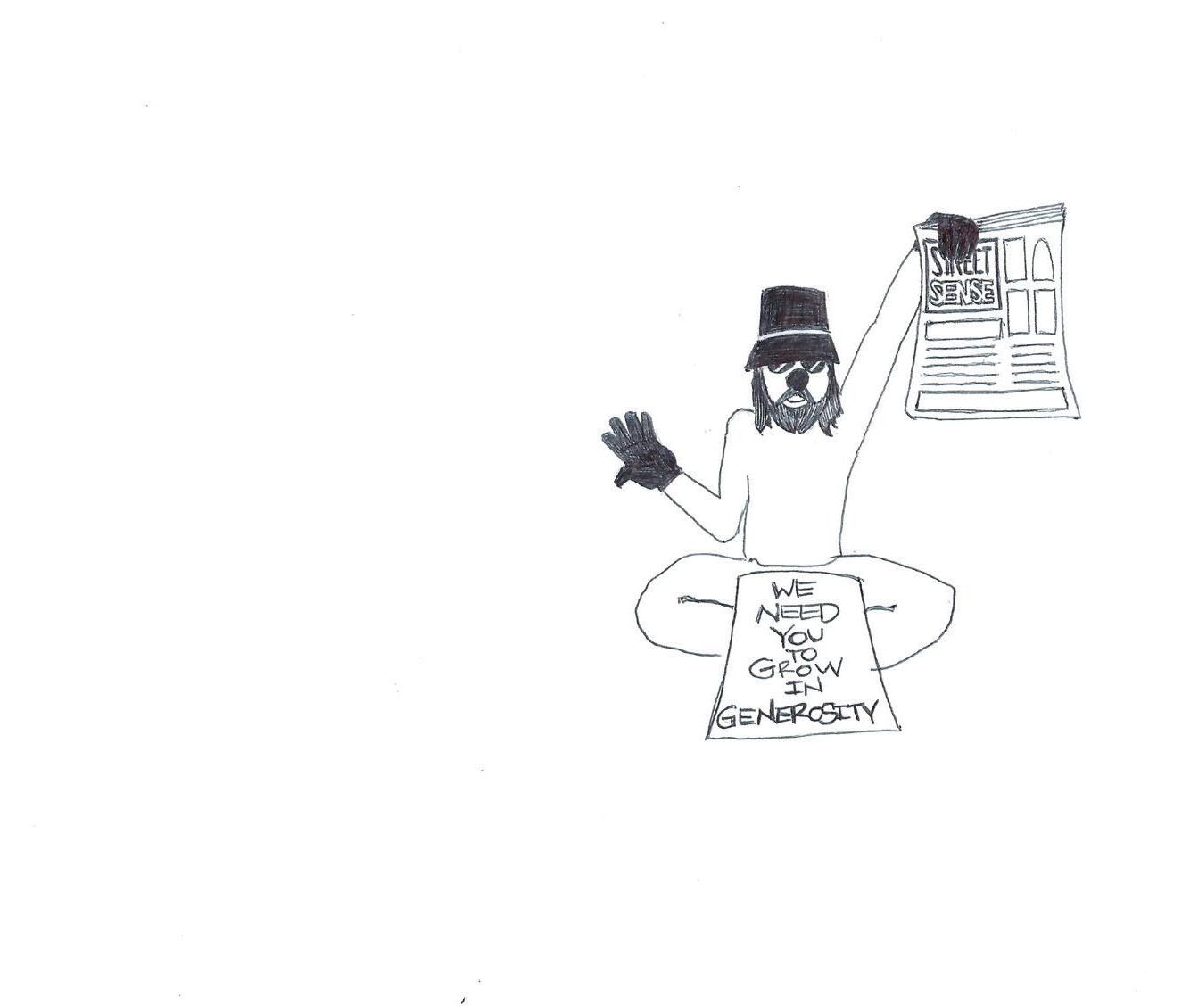
I may have to use these techniques differently because of going biweekly. If so, I will do that because I don’t want the paper to fold. I will continue getting the word out about how Street Sense Media helps so many people and about the important issues and topics we cover.
I need Street Sense for my income and my well-being!

Hello, readers. Thank you for supporting me as you have purchased and are now reading this edition of Street Sense. You may know that the fate of Street Sense Media is on the mind of many today. However, I wanted to write and thank the board of directors with my whole heart. I’ve written this acrostic poem to thank them.
B = Body of caring individuals
O = Open to suggestions



A = Admired by their vendors
R = Ready to meet with us if need be
D = Determined to keep this publication going
O = Outstanding, each and every one of them
F = Friendly, always
D = Decisive group of people
I = Invincible

R = Resilient
E = Empathetic
C = Consistent
T = Takes responsibility
O = Optimistic
R = Reliable
S = Sincere

Street Sense Media is in a pickle. Please all, will you donate your every nickel?

Street Sense Media is in a little bind. Please all, will you donate your every dime? As the board of directors meet, drinking bottles of spring water, they’re asking, will you donate your every quarter?

Across 1. Pound sounds
5. Singer/dancer Rivera of Broadway
10. Lunchbox staples you can Jif up in a Jiffy (abbr./initialism)
14. All in proper order
15. How grandpa experienced the 1960’s records you saw him groovin’ on (2-3)
16. Green-skinned “Return of the Jedi” girl
17. “Tickle Me” guy of Muppetdom
18. Rocky mountain ridge (EATER anagram)
19. Like flicks seen without special glasses, slangily (3-1) (incls. abbr.)

20. Option for one planning a trip abroad (3 wds.) (5,2,6)
23. Telescope inventor’s last name
24. King with a golden touch
27. Unit of force, in physics
28. Remove and replace, as auto parts (2 wds.) (6,3) (CAUGHT ONE anagram)
32. Shoot the breeze
34. Edible root of the Andes
35. ____ of oneself (highly confident)
36. Sound of a balloon animal sayin’ sayonara, maybe?
39. Fridge stickers
42. Common Glasgow topper
43. Pinnacle
45. “We’ve been ___!” (rip-off victims’ cry)

46. “The Racer’s Edge” (abbr./initialism)
48. Switzerland’s consistent policy in the event of armed conflicts between other countries (2 wds.) (2, 7) (GELATO RUN anagram)
51. Bullfight cheers
54. Bart, Belle, Brenda, Ken or Ringo
55. Country albums without music or singing?
58. Difficult-to-pronounce word or phrase, familiarly...or a hint to the circled letter groups (2 wds.) (6,7) (STUTTERING WOE anagram)
62. Microsoft’s popular gaming console
64. Japanese rice cake
65. Like some apples
66. Harp-related instrument supposedly played by King David
67. More ____ than not (most of the time)
68. Brainstorming unit
69. Figure (out)
70. Campfire treat named for a mash-up of 2 words meaning “I’ll have seconds”
71. New England catch
Down
1. An old saw has it that you can’t make an omelet without breaking this (2 wds.) (2,3)
2. Put in more bullets
3. Type of a tree illustration that may show some black sheep
4. Biblical form of capital punishment
5. Orange container
6. Like behavior in others that we honor with medals and parades
7. ___ fixe (obsession) (Fr.)
8. 1984 Peace Nobelist Desmond ____


9. Teen or golden finish?
10. Round square meals associated with Swanson and Stouffer’s
11. Voluntarily left the competition (2 wds.) (5,3) (WOOD TUBE anagram)
12. Media nickname of the singer/actress
half of the so-called “Bennifer” twosome (1,2) (initialism)
13. Blue
21. Glimmer
22. Astonished texter’s initialism

25. Emanation
26. Organic flower holder
29. Civic builders?
30. King topper
31. D.C. baseballers, for short
33. Thai currency
36. Droops
37. Word before check or remover
38. Bygone name for D.C. baseballers
40. Long-snouted fish
41. Absolut vodka rival, familiarly
44. Reproduces without impregnation or cloning
47. Manner of financial payment involving neither paper nor coinage, slangily
49. Certain receptacle for remains
50. It’s often removed with razors
52. New Mexico, in Mexico (Sp.)
53. Seethe with anger (2 wds.) (3,3)
56. Strong packing string
57. Mex. misses (abbr.) (Sp.)
59. Organic food no-nos (abbr./acron) (SMOG anagram)
60. Twin Cities or Ann Arbor campus, informally
61. Endo : inner :: ____ : outer
62. They’re significantly bigger than the M’s (abbr./ initialism)
63. Provo sch. named for an American religious leader and politico (abbr./initialism)
*This crossword puzzle is the original work of Patrick “Mac”McIntyre. It is provided to us courtesy of Real Change News, a street paper based in Seattle, Wa. Learn more about Real Change News and the International Network of Street Papers at realchangenews.org and insp.ngo.
It’s Hard to Say
Puzzle by Patrick “Mac” McIntyre
It must be the times we are in! Surprise and shock were the reactions. Au Bon Pain is closing. Street Sense Media is having budget strains. Every week, there seems to be another store or restaurant closing. Is it inflation or is it growing pains forcing all of the business world and residents to restructure financially? Is everything about money? I hope not! Our human value should be greater than another dime dropped in the parking meter, so to speak. Please share your thoughts and ideas on how to hold our fort.

Academy of Hope Public Charter School 202-269-6623 // 2315 18th Place NE aohdc.org
Bread for the City - 1525 7th St., NW // 202-265-2400 - 1640 Good Hope Rd., SE // 202-561-8587 breadforthecity.org
Calvary Women’s Services // 202-678-2341 1217 Good Hope Rd., SE calvaryservices.org
Catholic Charities // 202-772-4300 catholiccharitiesdc.org/gethelp
Central Union Mission // 202-745-7118 65 Massachusetts Ave., NW missiondc.org
Charlie’s Place // 202-232-3066 1830 Connecticut Ave., NW charliesplacedc.org
Christ House // 202-328-1100 1717 Columbia Rd., NW christhouse.org
Church of the Pilgrims // 202-387-6612 2201 P St., NW food (1-1:30 on Sundays only) churchofthepilgrims.org/outreach
Community Family Life Services 202-347-0511 // 305 E St., NW cflsdc.org
Community of Hope // 202-232-7356 communityofhopedc.org
Covenant House Washington 202-610-9600 // 2001 Mississippi Ave., SE covenanthousedc.org
D.C. Coalition for the Homeless 202-347-8870 // 1234 Massachusetts Ave., NW dccfh.org
Father McKenna Center // 202-842-1112 19 Eye St., NW fathermckennacenter.org
Food and Friends // 202-269-2277 (home delivery for those suffering from HIV, cancer, etc) 219 Riggs Rd., NE foodandfriends.org
Foundry Methodist Church // 202-332-4010 1500 16th St., NW ID (Friday 9am–12pm only) foundryumc.org/ministry-opportunities
Friendship Place // 202-364-1419 4713 Wisconsin Ave., NW friendshipplace.org
Georgetown Ministry Center // 202-338-8301 1041 Wisconsin Ave., NW georgetownministrycenter.org
Jobs Have Priority // 202-544-9128 425 2nd St., NW jobshavepriority.org
Loaves & Fishes // 202-232-0900 1525 Newton St., NW loavesandfishesdc.org
Martha’s Table // 202-328-6608 marthastable.org
2375 Elvans Road SE
2204 Martin Luther King Ave. SE
Miriam’s Kitchen // 202-452-8926 2401 Virginia Ave., NW miriamskitchen.org
My Sister’s Place // 202-529-5991 (24-hr hotline) mysistersplacedc.org
N Street Village // 202-939-2060 1333 N St., NW nstreetvillage.org
New York Avenue Shelter // 202-832-2359 1355-57 New York Ave., NE
Patricia Handy Place for Women 202-733-5378 // 810 5th St., NW
Samaritan Inns // 202-667-8831 2523 14th St., NW samaritaninns.org
Samaritan Ministry 202-722-2280 // 1516 Hamilton St., NW 202-889-7702 // 1345 U St., SE samaritanministry.org
Sasha Bruce Youthwork // 202-675-9340 741 8th St., SE sashabruce.org
So Others Might Eat (SOME) // 202-797-8806 71 O St., NW some.org
St. Luke’s Mission Center // 202-333-4949 3655 Calvert St., NW stlukesmissioncenter.org
Thrive DC // 202-737-9311 1525 Newton St., NW thrivedc.org
Unity Health Care 3020 14th St., NW // unityhealthcare.org
- Healthcare for the Homeless Health Center: 202-508-0500
- Community Health Centers: 202-469-4699
1500 Galen Street SE, 1500 Galen Street SE, 1251-B Saratoga Ave NE, 1660 Columbia Road NW, 4414 Benning Road NE, 3924 Minnesota Avenue NE, 765 Kenilworth Terrace NE, 555 L Street SE, 3240 Stanton Road SE, 3020 14th Street NW, 2700 Martin Luther King Jr. Avenue SE, 1717 Columbia Road NW, 1313 New York Avenue, NW BSMT Suite, 425 2nd Street NW, 4713 Wisconsin Avenue NW, 2100 New York Avenue NE, 2100 New York Avenue NE, 1333 N Street NW, 1355 New York Avenue NE, 828 Evarts Place, NE, 810 5th Street NW
Washington Legal Clinic for the Homeless 1200 U St., NW // 202-328-5500 legalclinic.org
The Welcome Table // 202-347-2635 1317 G St., NW. epiphanydc.org/thewelcometable
Whitman-Walker Health 1701 14th St., NW // 202-745-7000 2301 MLK Jr. Ave., SE // 202-797-3567 whitman-walker.org
Restaurant Team Member Chipotle // 2000 Pennsylvania Ave NW (multiple locations)
Full-time, Part-time
Work at multiple stations: the grill, cashier, prep, salsa and expo.
REQUIRED: N/A
APPLY: tinyurl.com/Chipotle-TeamMember-Crew
Dishwasher
Jitjatjo // 1440 G St NW
Full-time, Temp-to-hire
Maintain a clean and organized kitchen/ dishwashing area, assist with various tasks and cleaning duties, collect dishes and load the dishwasher
REQUIRED: Have a smartphone with a data plan
APPLY: tinyurl.com/Jitjatjo-Dishwasher
Tire Technician Mac’s Tire Service // 423 Florida Ave NE
Part-time
Perform service and repair work, install and perform tire maintenance and safely drive the service truck.
REQUIRED: Reliable transportation
APPLY: tinyurl.com/Macs-Tire-ServiceTechnician
For further information and listings, visit our online service guide at StreetSenseMedia.org/service-guide



